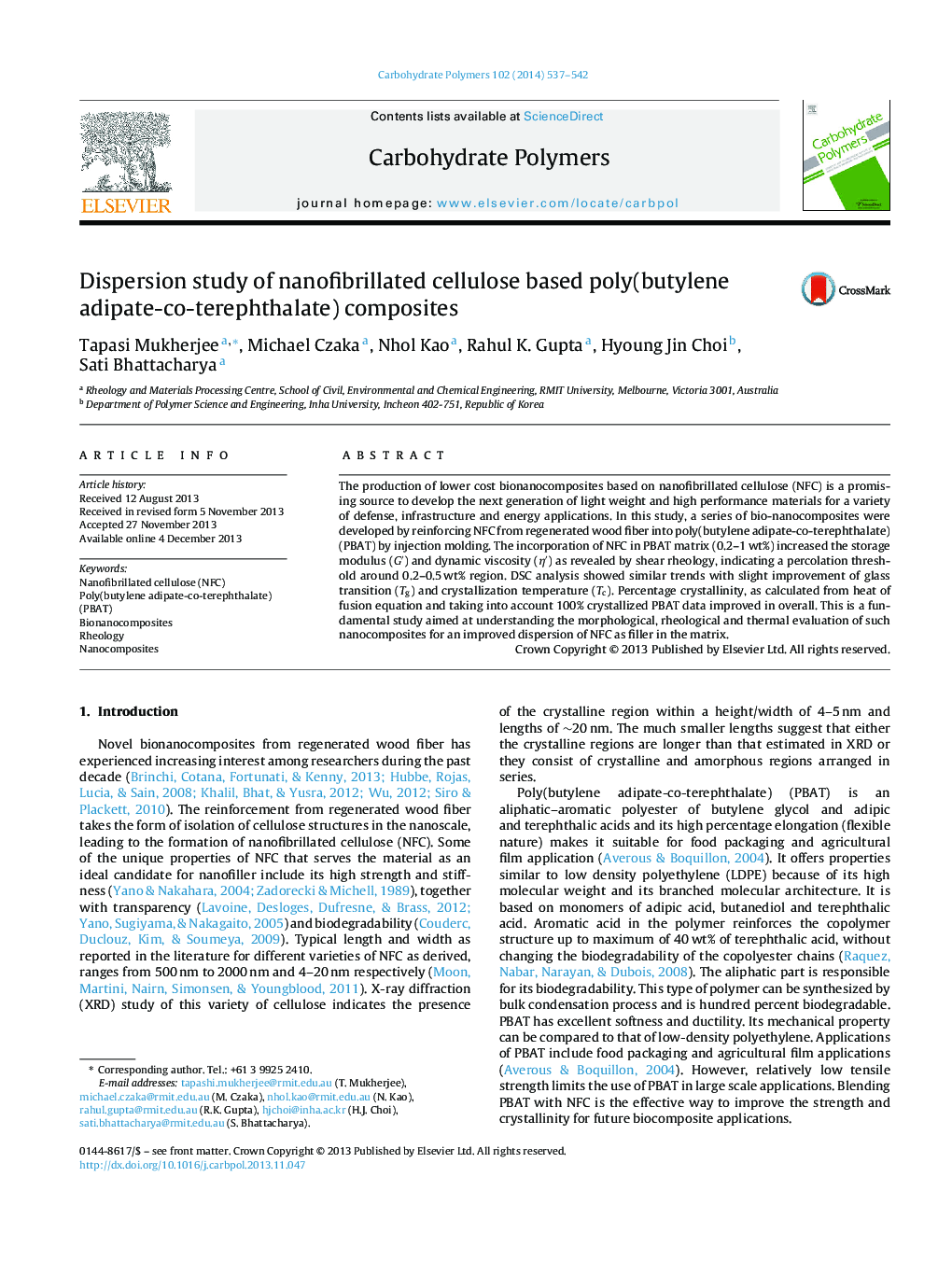| Article ID | Journal | Published Year | Pages | File Type |
|---|---|---|---|---|
| 7793102 | Carbohydrate Polymers | 2014 | 6 Pages |
Abstract
The production of lower cost bionanocomposites based on nanofibrillated cellulose (NFC) is a promising source to develop the next generation of light weight and high performance materials for a variety of defense, infrastructure and energy applications. In this study, a series of bio-nanocomposites were developed by reinforcing NFC from regenerated wood fiber into poly(butylene adipate-co-terephthalate) (PBAT) by injection molding. The incorporation of NFC in PBAT matrix (0.2-1 wt%) increased the storage modulus (Gâ²) and dynamic viscosity (ηâ²) as revealed by shear rheology, indicating a percolation threshold around 0.2-0.5 wt% region. DSC analysis showed similar trends with slight improvement of glass transition (Tg) and crystallization temperature (Tc). Percentage crystallinity, as calculated from heat of fusion equation and taking into account 100% crystallized PBAT data improved in overall. This is a fundamental study aimed at understanding the morphological, rheological and thermal evaluation of such nanocomposites for an improved dispersion of NFC as filler in the matrix.
Related Topics
Physical Sciences and Engineering
Chemistry
Organic Chemistry
Authors
Tapasi Mukherjee, Michael Czaka, Nhol Kao, Rahul K. Gupta, Hyoung Jin Choi, Sati Bhattacharya,
